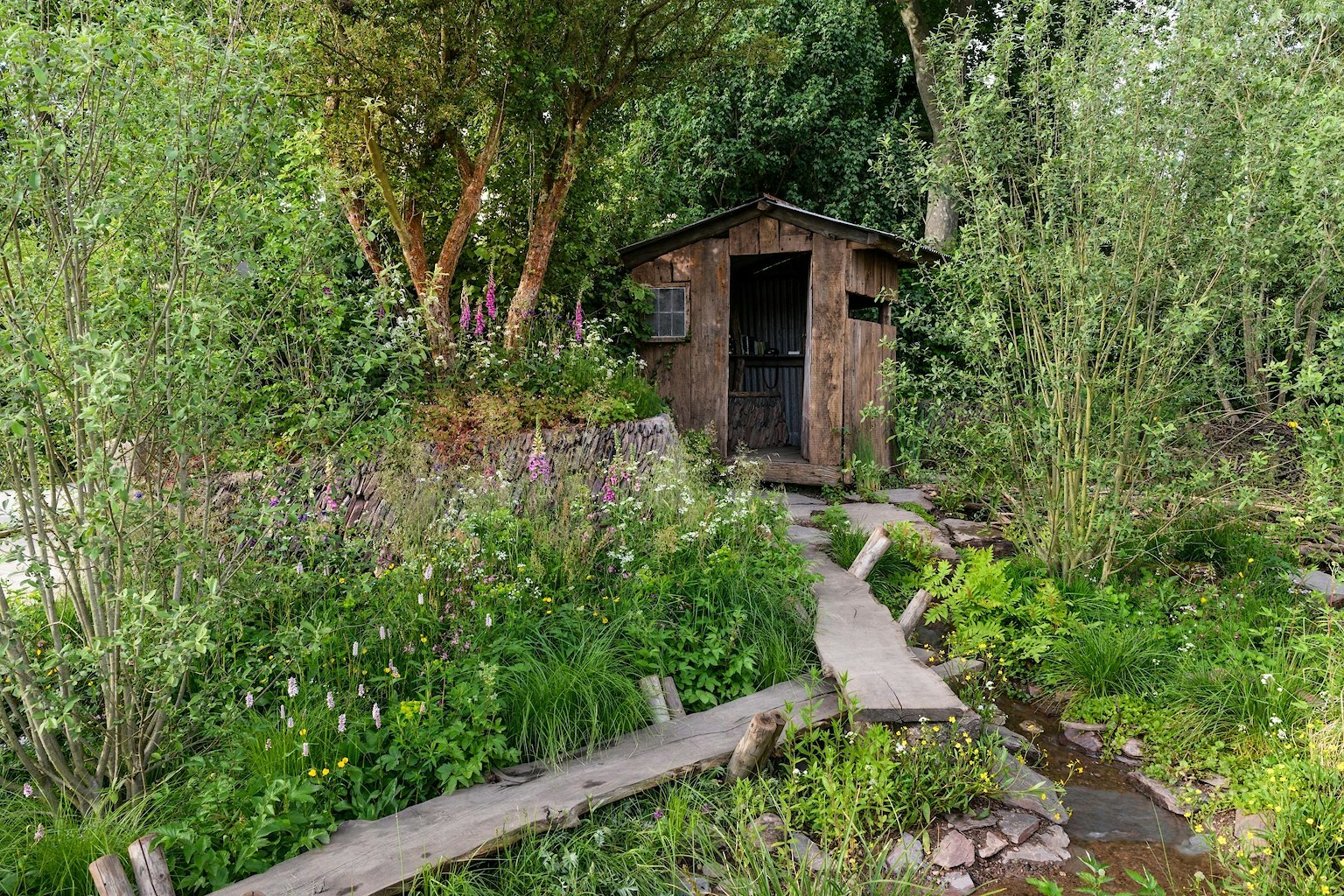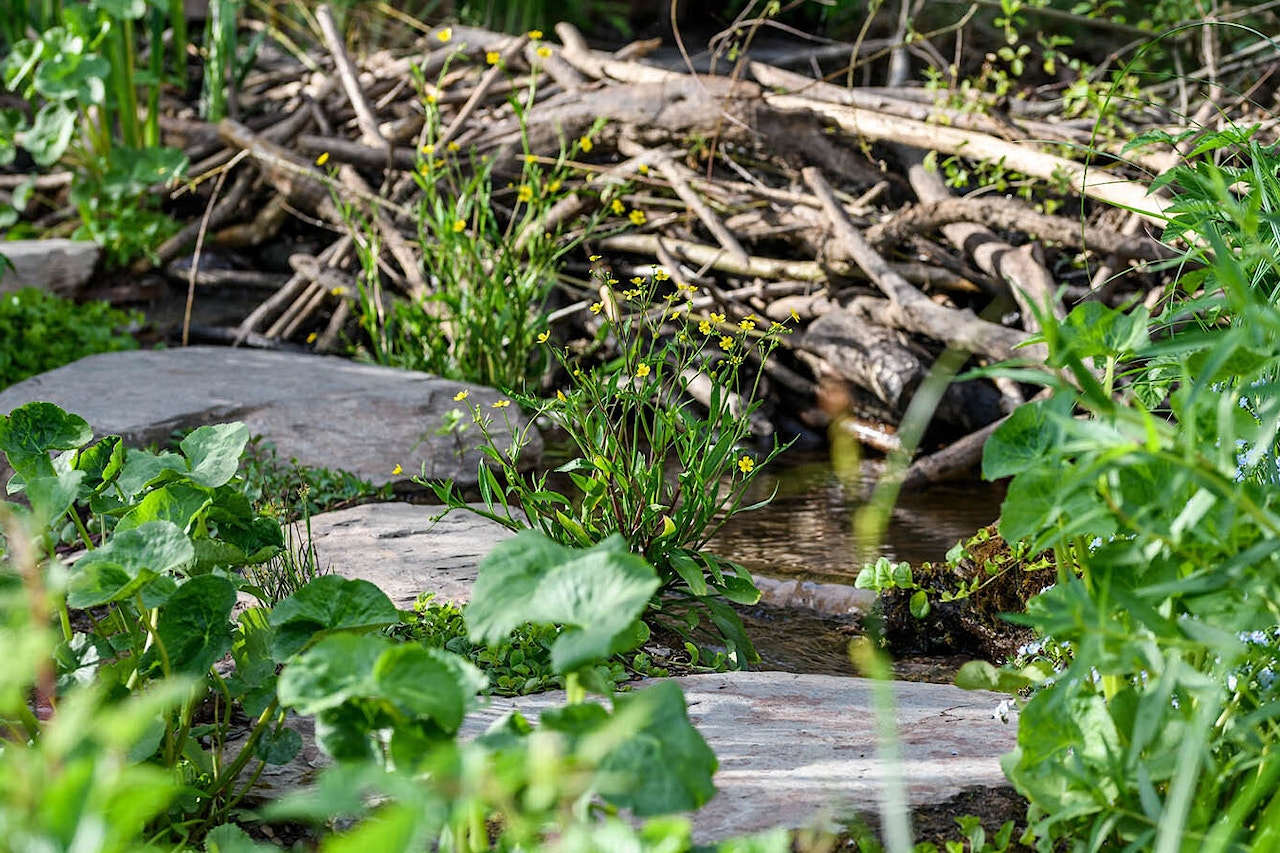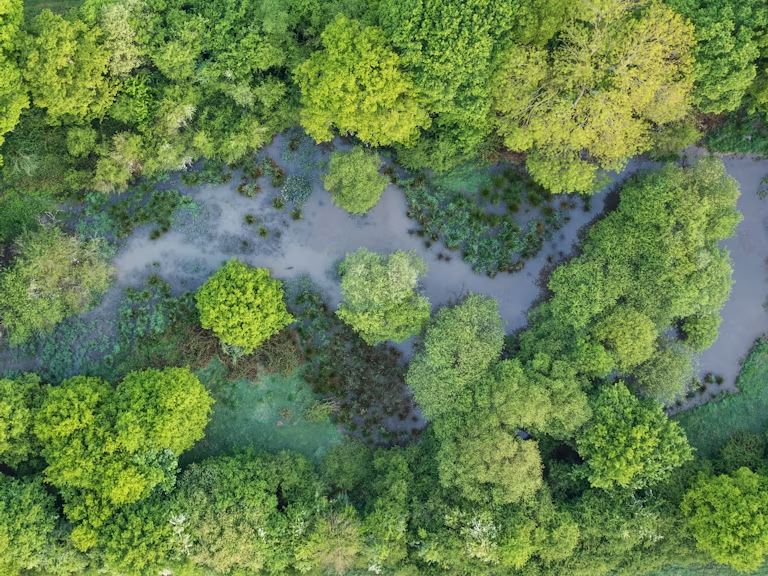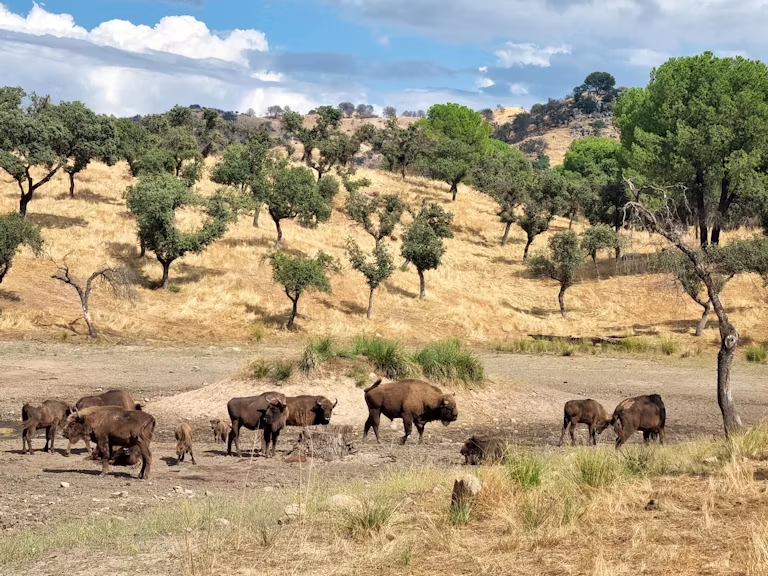Rewilding the Chelsea Flower Show
Rebecca Wrigley, Rewilding Britain’s CEO, celebrates bringing a new aesthetic into the heart of the establishment.

Published 01/06/2022
“Ramshackle plot featuring shed and a pile of sticks wins first prize at Chelsea Flower Show.” It’s this Daily Mail headline, published as A Rewilding Britain Landscape was awarded Best Show Garden at Chelsea Flower Show 2022, that tells me we were right to take rewilding to the prestigious London show.
Working with the talented garden designers Lulu Urquhart and Adam Hunt to bring the messy beauty and joyous abundance of rewilding to millions of people across the nation – and to get them talking about it – has been the most fantastic opportunity, one for which we’re very grateful to sponsors Project Giving Back .
Having journalists, horticulturalists and TV presenters ask whether the ‘overgrown’ plot, with its rustic wildlife hide, babbling brook and a riot of wildflowers, really was ‘what Chelsea Flower Show is all about’ is exactly the sort of debate we wanted to see.

The conversations we’ve been part of next to the show garden were fascinating. The garden’s authenticity – pennywort poking out of a drystone wall, swathes of foxgloves, a tangle of sticks that really have been gnawed by beavers – clearly gripped the imagination of a nation of gardeners.
Visitors told us about their own ‘weeds’, how they’re doing No Mow May, what the neighbours think, and talked beavers with us. These creatures, the unseen stars of our garden which can be heard in a wonderful soundscape playing in the background, have been so helpful in enabling us to open up a serious discussion on keystone species and how they can literally rebuild the web of life in a landscape.
We even had Kirsty Allsopp, whose own land has been shaped by the River Otter’s population of wild-living beavers, pop by and compare notes on the magic of these incredible eco-engineers.
And maybe the UK Government will feel inspired and emboldened by all this public enthusiasm as it prepares its response to the beaver reintroduction consultation that closed in November. Defra’s Rebecca Pow, who’s heading this up, did indeed pay a visit to the garden.

Of course we also had a few debates about whether the award-winning creation was a garden or in fact a landscape, whether it actually was rewilding or not.
We would agree that a 10x15-metre plot in the middle of Chelsea, built and dismantled in a matter of weeks, can never be rewilding in and of itself. Rewilding, by definition, is ‘the large-scale restoration of ecosystems to the point where nature is allowed to take care of itself’. And it takes time, of course.
But what this show garden definitely was was a place where people could really experience what a thriving ecosystem looks and feels like. Manning the garden for the day, the team got a real sense of visitors arriving at A Rewilding Britain Landscape after stopping at the other show gardens, all of which were somehow more ‘constructed’, more constrained, and being able to breathe a sigh of relief.
It was almost as if visitors were experiencing an innate physiological and psychological reaction to the scene in which they found themselves. A feeling of ‘yes, this is what nature looks like when it’s really alive!’
And we have to say, it really was alive with wildlife. The comfrey and valerian were buzzing with bees, dragonflies and butterflies paid their visits, and a blackbird came to bathe in the stream.
It might sound obvious, but it’s vital that all of us get to remember what thriving ecosystems are actually like. We’re so used to seeing depleted landscapes here in Britain, from overgrazed uplands to billiard green fields, that our expectations have shifted, our senses dulled. Many of us get a frisson of excitement seeing wilderness on a David Attenborough programme, yet we don’t quite know what it’s supposed to look like here in our own countryside.
“All we humans need to do is to put back in the right ingredients, such as beavers and other missing species, and the natural processes will take care of themselves.”
Isn’t it ironic that to show people how nature could look when you just let it be – or intervene only to kickstart natural processes – has taken such a huge amount of effort, skilled and expert planting and human engineering in central London?
We absolutely take our hats off to Lulu and Adam who, with a brilliant team, made the garden look like it had always been there. Like the beavers had got on with their gnawing and built a real dam.
The muddy beaver pool did actually flow through the dam to run clear, demonstrating how these creatures contribute to cleaning our water systems. The aquilegia had been painstakingly relocated with last year’s seedheads intact, just as they would in the wild – but not as you’d normally find them at Chelsea.
On a technical and horticultural level, the show garden was a real feat. And yet isn’t it incredible to think that nature could pull this off no problem?
And that’s the point. All we humans need to do is to put back in the right ingredients, such as beavers and other missing species, and the processes – the natural regeneration of woodland, the sequestration of carbon by soil, the cleaning of water, the natural absorption of flooding – will take care of themselves.

To have been able to broach these complex conversations about ecology with the thousands of people who visited the garden has been a golden opportunity for us at Rewilding Britain. We know that it’s only by touching people’s hearts and minds and showing them what wilder places look and feel like that we can hope to shift, even if just a little, the way people see and relate to the landscapes around them
With an outpouring of excitement for the show garden – from a rewilding-themed Radio 6 Music listener’s playlist to a mention on Have I Got News for You – we truly hope rewilding’s moment in the spotlight has served as a sign of reassurance to the UK Government that rewilding really does have the public’s support.
We know that we are not doing enough to tackle the species extinction crisis and climate emergency, not enough to reconnect people with the natural world and sustain communities. Rewilding simply has to be a key part of the jigsaw puzzle of how we as a nation choose to use our land.

Explore our Rewilding Manifesto
We need UK Government to Think Big and Act Wild for nature, people and planet.
Learn more
Our vision
We have big ambitions. Find out what we’ve set out to achieve through rewilding.
Our 2025-2030 strategy



